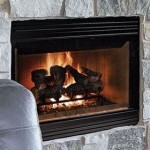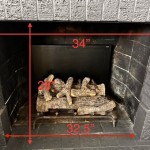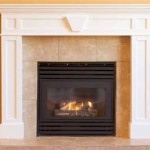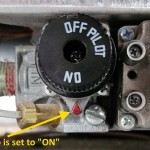Gas Stove Fireplaces: An In-Depth Examination
Gas stove fireplaces offer a compelling alternative to traditional wood-burning fireplaces and electric alternatives, combining the aesthetic appeal of a flickering flame with the convenience and efficiency of gas. They represent a significant advancement in home heating technology, providing warmth and ambiance with reduced maintenance and environmental impact compared to their wood-burning counterparts. This article will delve into the various aspects of gas stove fireplaces, exploring their functionality, benefits, installation considerations, and maintenance requirements.
Functionality and Design
A gas stove fireplace operates by burning natural gas or propane to generate heat. The gas is ignited within a firebox, often containing ceramic logs or other decorative elements designed to mimic the appearance of a real wood fire. The heat produced is then radiated into the room, providing a comfortable and efficient heating solution. The flame height and heat output are typically adjustable via a control knob or remote control, allowing users to customize the fireplace to their specific needs and preferences. The design of gas stove fireplaces is highly versatile, ranging from traditional cast-iron models that evoke a classic aesthetic to contemporary designs featuring sleek lines and modern materials. This wide range of styles allows homeowners to seamlessly integrate a gas stove fireplace into virtually any interior decor.
The core components of a gas stove fireplace include the gas valve, burner assembly, firebox, venting system, and control system. The gas valve regulates the flow of gas to the burner, ensuring a consistent and safe supply. The burner assembly is responsible for mixing the gas with air and igniting the mixture to produce the flame. The firebox is the enclosure that houses the burner and decorative logs, providing a safe and visually appealing environment for the fire. The venting system is crucial for safely expelling combustion byproducts, such as carbon dioxide and water vapor, away from the living space. Finally, the control system allows users to adjust the flame height, heat output, and other settings, often including features such as timers and thermostats.
Gas stove fireplaces are available in various ignition systems, including standing pilot, electronic ignition, and intermittent pilot ignition (IPI). Standing pilot systems have a small pilot flame that burns continuously, providing a ready source of ignition for the main burner. This type of system is relatively simple and reliable but consumes a small amount of gas even when the fireplace is not in use. Electronic ignition systems use an electronic spark to ignite the gas, eliminating the need for a pilot flame and saving energy. Intermittent pilot ignition (IPI) systems combine features of both standing pilot and electronic ignition systems, using a pilot flame only when the fireplace is in use.
The aesthetic realism of gas stove fireplaces has improved dramatically in recent years. Manufacturers employ advanced techniques to create ceramic logs that accurately replicate the texture, color, and shape of real wood. Some models even feature glowing embers and flickering flames that mimic the natural movement of a wood fire. The addition of reflective panels behind the logs further enhances the visual appeal, creating the illusion of depth and intensifying the light produced by the flames. These design innovations have made gas stove fireplaces a highly desirable alternative for homeowners who appreciate the beauty of a traditional fireplace but prefer the convenience and efficiency of gas.
Benefits of Gas Stove Fireplaces
Gas stove fireplaces offer a number of distinct advantages over traditional wood-burning fireplaces. One of the primary benefits is convenience. Gas stove fireplaces require minimal maintenance and eliminate the need to chop, stack, and store wood. They can be easily turned on and off with the flip of a switch or the press of a button, providing instant warmth and ambiance. Unlike wood-burning fireplaces, gas stove fireplaces produce no ashes, smoke, or creosote, reducing the risk of chimney fires and simplifying cleanup. This convenience makes gas stove fireplaces an attractive option for busy homeowners who want to enjoy the benefits of a fireplace without the associated hassles.
Another significant advantage of gas stove fireplaces is their efficiency. Gas-burning appliances are typically more efficient than wood-burning fireplaces, converting a higher percentage of fuel into usable heat. This can result in lower heating costs and reduced energy consumption. Some gas stove fireplaces are equipped with features such as thermostats and programmable timers, which allow users to precisely control the temperature and heating schedule, further maximizing energy efficiency. The improved efficiency also translates into reduced emissions, making gas stove fireplaces a more environmentally friendly option than wood-burning alternatives.
Safety is another key consideration. Gas stove fireplaces are generally safer than wood-burning fireplaces due to their controlled combustion and venting systems. They are less likely to produce sparks or embers that could ignite nearby materials, reducing the risk of house fires. The sealed firebox prevents smoke and carbon monoxide from entering the living space, ensuring a healthier and safer environment. Many gas stove fireplaces are equipped with safety features such as automatic shut-off valves that detect gas leaks or abnormal operating conditions, further enhancing safety.
The versatility of gas stove fireplaces is a major selling point. They can be installed in a variety of locations, including homes without existing chimneys. Direct-vent models, for example, can be vented horizontally through an exterior wall, eliminating the need for a traditional chimney. Vent-free models, while requiring careful consideration and adherence to safety regulations, offer even greater flexibility in terms of placement, as they do not require any venting at all. The ability to install gas stove fireplaces in a wide range of locations makes them a viable option for homeowners who are unable or unwilling to install a traditional wood-burning fireplace.
Installation and Maintenance Considerations
The installation of a gas stove fireplace should always be performed by a qualified and licensed professional to ensure safety and compliance with local building codes. The installation process typically involves connecting the fireplace to a gas supply line, installing the venting system, and securing the appliance to the floor. The installer will also need to verify that the gas pressure is correct and that the fireplace is operating safely and efficiently. Proper installation is crucial for preventing gas leaks, carbon monoxide poisoning, and other potential hazards.
Regular maintenance is essential for ensuring the safe and efficient operation of a gas stove fireplace. This includes cleaning the burner assembly, inspecting the venting system, and checking the gas connections for leaks. The frequency of maintenance will depend on the usage of the fireplace and the manufacturer's recommendations. A professional inspection and cleaning should be performed at least once a year to identify and address any potential issues before they become serious problems. It is also important to keep the area around the fireplace clear of combustible materials to prevent fires.
Venting systems require particular attention during maintenance. The venting system should be inspected regularly for blockages, corrosion, and leaks. Blockages can restrict the flow of combustion byproducts, leading to carbon monoxide buildup. Corrosion can weaken the venting system, potentially causing leaks or structural failures. Leaks can allow combustion byproducts to enter the living space, posing a health hazard. A professional chimney sweep can inspect and clean the venting system to ensure that it is functioning properly and safely.
While vent-free gas stove fireplaces offer installation flexibility, they also require careful consideration and adherence to safety regulations. Vent-free appliances release combustion byproducts directly into the living space, so it is essential to ensure adequate ventilation to prevent carbon monoxide buildup. Many jurisdictions have restrictions on the use of vent-free appliances, and it is important to comply with all applicable codes and regulations. A carbon monoxide detector should always be installed in the vicinity of a vent-free gas stove fireplace to provide an early warning of any potential problems.
Choosing the right type of gas stove fireplace involves considering factors such as heating needs, aesthetic preferences, budget, and installation requirements. Direct-vent models are a popular choice for their efficiency and safety, while vent-free models offer greater installation flexibility. The size of the fireplace should be appropriate for the size of the room to ensure adequate heating without overheating. The design of the fireplace should complement the existing decor of the room. Finally, the cost of the fireplace, including installation and maintenance, should be factored into the decision-making process.

Gas Stoves Made In Usa Lopi

Gazco Huntingdon 30 Gas Stove Fireplace Supers

Rais Gabo Gas Ii Stove For

Freestanding Gas Burning Stoves Sierra Hearth And Home

Gas Stoves Fireplace And Stove The Hearth Doctor Inc

Modern Contemporary Gas Stoves Stovax Gazco

Enviro S Gas Westley Cast Iron Stove

Vision Small Gas Stoves Gazco Contemporary

Benefits Popularity Of Gas Fireplaces Stoves And Fireplace Inserts

Lopi Berkshire Bay Window Gas Stove Fireplaces Unlimited Heating Cooling
Related Posts








